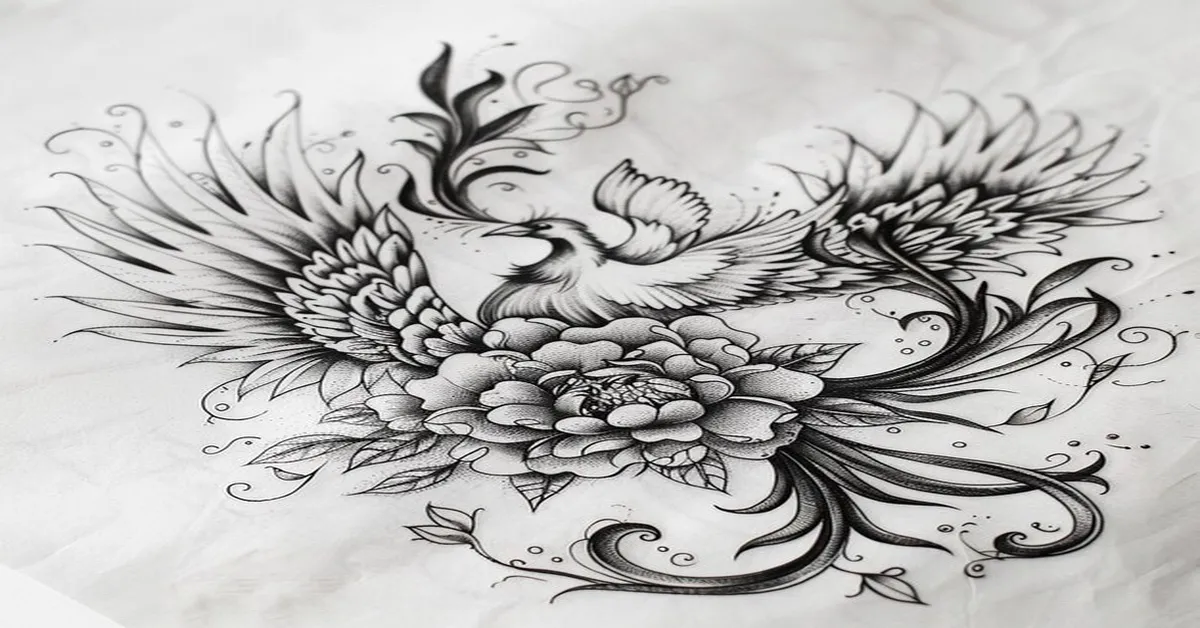A phoenix tattoo is more than just a beautiful design—it’s a symbol of rebirth, strength, and transformation. Inspired by ancient mythology, the phoenix represents overcoming challenges and rising stronger. Whether you want a small, elegant piece or a bold full-back tattoo, this guide will help you explore the best phoenix tattoo designs, their meanings, and placement ideas.
What is a Phoenix?
The phoenix is a mythical bird that appears in various cultures, including Greek, Egyptian, and Chinese mythology. It is said to burst into flames upon death and rise again from its ashes, symbolizing immortality and renewal. This legendary creature has inspired countless stories and works of art, making it a powerful tattoo choice.
The Symbolism and Meaning of a Phoenix Tattoo
A phoenix tattoo carries deep significance, often representing:
- Rebirth & Renewal – A reminder of personal transformation or overcoming adversity.
- Strength & Resilience – Rising from challenges and hardships stronger than before.
- Immortality & Eternity – The cycle of life, death, and rebirth.
- Hope & Perseverance – A sign of never giving up and believing in new beginnings.
- Power & Fire – The fiery nature of the phoenix embodies passion, energy, and determination.
Popular Tattoo Designs & Styles
Phoenix tattoos come in various artistic styles, each with unique appeal.
1. Traditional Tattoo
- Uses bold colors and thick outlines.
- Resembles classic tattoo artistry with a vibrant aesthetic.
2. Minimalist Tattoo
- Simple, fine-line design.
- Often small and elegant, perfect for a subtle look.
3. Watercolor Tattoo
- Features splashes of bright colors.
- Mimics a painted effect, adding an artistic touch.
4. Japanese Tattoo (Hō-ō Bird)
- Inspired by Japanese mythology, featuring intricate designs.
- Often paired with cherry blossoms or dragons.
5. Geometric Tattoo
- Incorporates sharp lines and symmetrical shapes.
- A modern and abstract interpretation.
6. Tribal Tattoo
- Black ink with intricate tribal patterns.
- Common among those who prefer a cultural and symbolic look.
Best Placement Ideas for a Tattoo
Placement plays a crucial role in tattoo design, especially for a phoenix tattoo, which often involves flowing shapes and detailed feathers.
- Back – Ideal for large, detailed phoenix tattoos with extended wings.
- Arm & Sleeve – Great for a dynamic phoenix wrapping around the arm.
- Chest – A bold placement, especially for men, representing strength and renewal.
- Thigh – A feminine yet powerful choice, perfect for larger designs.
- Ribs & Side – An elegant, flowy design that enhances body curves.
- Wrist or Ankle – Suitable for small, minimalist phoenix tattoos.
Choosing the Right Colors for Your Phoenix Tattoo
Color choice can add extra meaning to a tattoo:
- Red & Orange – Symbolizes fire, passion, and transformation.
- Blue & Purple – Represents mysticism, spirituality, and rebirth.
- Black & Gray – A bold, monochrome look emphasizing depth and shadow.
- Gold & Yellow – Highlights the legendary bird’s divine energy and immortality.
Phoenix Tattoo for Men vs. Women
While phoenix tattoos are gender-neutral, certain styles appeal more to men or women based on traditional preferences.
Phoenix Tattoos for Men:
- Large, bold designs covering the back, chest, or arm.
- Often incorporates flames, skulls, or dragons for a fierce look.
- Darker color palettes or black-and-gray realism.
Phoenix Tattoos for Women:
- Elegant, flowing designs on the thigh, ribs, or back.
- Delicate line work and vibrant colors.
- Watercolor or minimalist styles are popular choices.
Pain Level and Healing Process
Tattoo pain depends on placement and size. Areas with more bone (like ribs, hands, or spine) tend to hurt more. Here’s what to expect:
Pain Scale (1-10) by Placement:
- Back (5/10) – Moderate pain, larger canvas for artists.
- Arm & Sleeve (4/10) – One of the least painful areas.
- Ribs (8/10) – Very painful due to thin skin over bones.
- Thigh (5/10) – Moderate pain, plenty of muscle.
- Wrist & Ankle (7/10) – Small area with thin skin, can be painful.
Healing Process:
- Week 1: Swelling, redness, and slight scabbing.
- Week 2-3: Peeling begins, colors might appear dull temporarily.
- Week 4-6: Fully healed, ink settles into the skin.
How to Choose the Right Tattoo Artist
- Check Their Portfolio – Look for phoenix tattoos they’ve done before.
- Read Reviews – Ensure positive experiences from previous clients.
- Hygiene Standards – The studio should follow strict cleanliness protocols.
- Consultation – Discuss your ideas and get professional advice.
Tattoo Aftercare Tips
Taking care of your tattoo ensures longevity and vibrancy.
- Keep it Clean – Wash with mild soap and lukewarm water.
- Moisturize Regularly – Apply fragrance-free lotion.
- Avoid Sun Exposure – Use sunscreen to prevent fading.
- Don’t Pick Scabs – Let the skin heal naturally.
- Stay Hydrated – Good skin health helps in faster healing.
Conclusion
A phoenix tattoo is a timeless and meaningful piece of body art that symbolizes transformation, strength, and renewal. With so many designs, colors, and placements to choose from, finding the perfect tattoo is a deeply personal journey. Whether you prefer a minimalist style or a full-back masterpiece, your phoenix tattoo will stand as a powerful reminder of resilience and new beginnings.
FAQs
1. What does a phoenix tattoo symbolize?
A phoenix tattoo represents rebirth, strength, resilience, and transformation.
2. How much does a phoenix tattoo cost?
Prices vary based on size, complexity, and artist experience. Expect anywhere from $150 to $2000+.
3. Are tattoos only for men?
No, phoenix tattoos are gender-neutral and popular among both men and women.
4. Do tattoos fade over time?
Like all tattoos, they fade over time. Proper aftercare and sun protection help maintain vibrancy.
5. Can I customize my phoenix tattoo design?
Absolutely! Work with your tattoo artist to create a unique design that reflects your personal story.
Ready to get inked? Find a skilled tattoo artist and bring your phoenix tattoo vision to life today!









